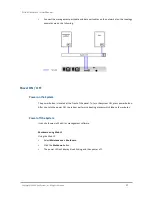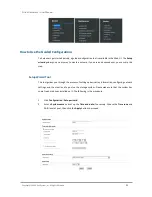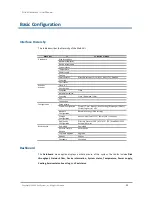
Copyright@2014 D-Link System, Inc. All Rights Reserved.
14
D-Link Document – User Manual
Type
Description
Min. No. of Drives
RAID 0
Disk striping.
1
RAID 1
Disk mirroring over two disks.
2
RAID 5
Striping with interspersed parity over the member disks.
3
RAID 6
2-dimensional parity protection over the member disks.
4
RAID 50
Striping over the member RAID 5 volumes.
6
RAID 60
Striping over the member RAID 6 volumes.
8
NAS Concepts
NAS (Network-Attached Storage) is file-level computer data storage connected to a computer
network providing data access to heterogeneous clients. NAS uses file-based protocols such as NFS
(popular on UNIX systems), SMB/CIFS (Server Message Block/Common Internet File System) (used
with MS Windows systems), or AFP (used with Apple Macintosh computers). NAS units rarely limit
clients to a single protocol.
NAS provides both storage and a file system. This is often contrasted with SAN (Storage Area
Network), which provides only block-based storage and leaves file system concerns on the "client"
side. SAN protocols are SCSI, Fibre Channel, iSCSI, ATA over Ethernet (AoE), or HyperSCSI.
One way to loosely conceptualize the difference between a NAS and a SAN is that a NAS appears
to the client OS (operating system) as a file server (the client can map network drives to shares on
that server) whereas a disk available through a SAN still appears to the client OS as a disk, visible in
disk and volume management utilities (along with client's local disks), and available to be
formatted with a file system and mounted.














































